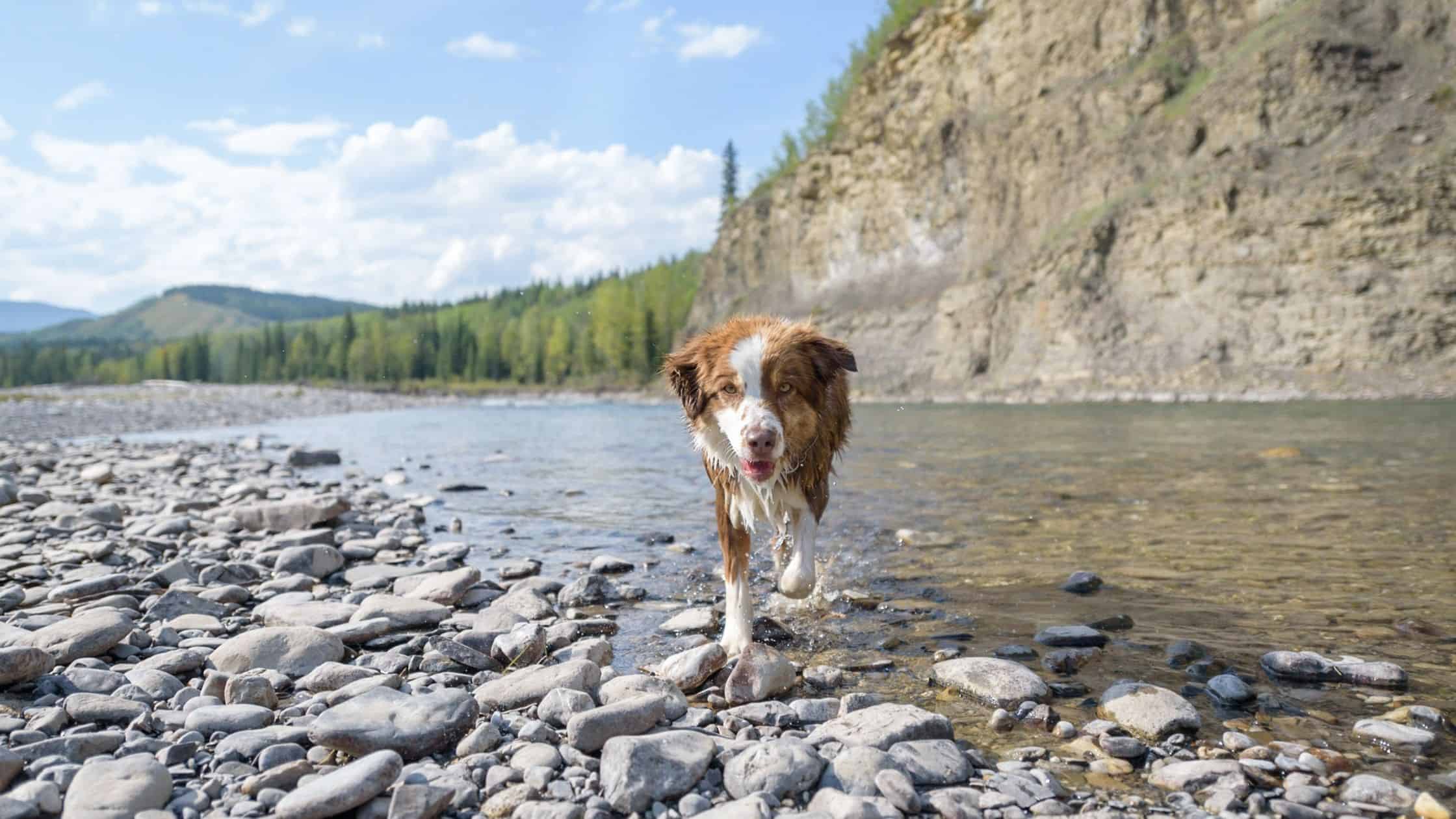What is Leptospirosis in Dogs & What You Should Know About it?

One challenging aspect of owning a dog that everyone experiences is the fact that they can’t tell us when something is wrong or when they are feeling pain. It is entirely up to us as owners to determine if we need to seek assistance from a vet or help fix our pup’s issues.
Leptospirosis is a disease that is brought about by bacteria, which is found in soil and water. The disease spreads through your dog’s bloodstream, and they can contract leptospirosis from water that carries urine from infected wildlife. The bacteria gets into your dog by burrowing into its skin. Unfortunately, this disease can be very severe and life-threatening for your pup.
So, how can you identify the signs and symptoms of this disease? How can you prevent it from occurring, or treat it if you find that your dog has contracted it? Below is all that you should know about Leptospirosis and how you can help your dog from getting it.
How Do Dogs Contract Leptospirosis?
As mentioned, wet environments contribute to the spread of this bacterial disease in dogs. So if your dog has been in areas where there is marsh or muddy puddles, irrigated pastures or any place with stagnant water that animals are in and out of frequently, this is a big risk for leptospirosis.
Dogs will contract the disease by being in contact with urine from an animal that has it. In addition, any open cuts or sores on their skin will significantly increase their chances of getting it. So, if your dog happens to drink in lakes or rivers, swims through any infected waters, or even plays in infected muddy areas, they should be examined for this disease.
Dogs can also get leptospirosis from a bite by an infected animal or by eating anything infected. Though it is very rare, sometimes dogs can contract the disease from breeding.
Signs and Symptoms of Leptospirosis in Dogs
There are multiple signs and symptoms of leptospirosis in dogs, so whether or not they have it may be difficult to diagnose without assistance. In some cases, dogs don’t even show any signs of illness, and some of the signs are very mild and go away quickly.
However, there is always the high risk of your dog becoming very ill and possibly dying. So, suppose you have any suspicions that your dog could develop this disease. In that case, it can help speaking to an online veterinarian to determine whether or not your dog needs to be brought in for examination.
Some of the more common, tell-tale signs of leptospirosis include:
- Loss of appetite
- Fever/shivering
- Muscle tenderness or stiffness
- Increase thirst/dehydration and urination
- Vomiting and diarrhea (may have blood)
- Dark, red-spotted gums
- Yellow skin/whites of eyes
- Difficulty breathing
- Swollen legs
- Access fluid in chest or abdomen
Since Leptospirosis spreads throughout your dog’s body, it attacks many organs and affects the central nervous system. Depending on whether your dog has a solid immune system, it may or may not be able to eradicate the infection, but even if your dog gets better, the disease can remain in the kidneys and infect their urine. The condition in the liver or kidneys can be fatal. Younger dogs without developed immune systems are at the highest risk for complications.

Preventative Measures
Infected animals can spread the disease to humans, with children at the highest risk. Therefore, you should always be careful when owning a pet when you are handling them. People and pets can both be infected but not show any symptoms.
Wearing protective gloves when handling your pets and taking precautions with any bodily fluids from your pet is vital. When you bring your pet to a veterinarian, they will need a background of your dog’s health and any signs or symptoms or any way that your dog may have contracted the disease. This way, they can effectively see what stage of the infection they are at and what organs might be affected.
How Are Dogs Diagnosed with Leptospirosis?
Diagnosing leptospirosis can be challenging; your vet will typically perform a blood test and a urinalysis, as well as a submission of blood to test for antibodies. However, many factors make it difficult to determine if your dog has the disease. For example, antibodies may not be detectable if it is too early when your dog contracted it.
Usually, there will be two samples taken a couple of weeks apart to be compared. The problem with this is that you cannot wait on treatment for that long, so your dog most likely will be put on antibiotic therapy right away.
Treatment for Leptospirosis
Treatment for your dog includes antibiotics such as penicillin, and if you catch the disease early enough, you can expect your pup to make a full recovery. Sometimes pain medication and anti-emetic medicines may accompany the antibiotics for pain and nausea.
Your dog may need to go into the hospital depending on how severe the leptospirosis has affected organs. With the kidneys and liver, there needs to be IVs and close monitoring. In addition, if the fluid therapy does not work, your dog needs to be referred to a center for dialysis.
When your dog can go home, you need to take on the role of caregiver and monitor your dog’s ongoing healing. Your vet should advise you on specifics such as handling urine and proper cleaning. If you have other animals in the house, you may want to inquire about having them treated preemptively as well.
If you have any concerns about your dog contracting this deadly disease, vaccines are available that protect your pup against the bacteria. If your dog is at least three months old, you should ask your veterinarian about administering the leptospirosis vaccine, which is given in two separate doses, with a yearly booster after.
There are some risks to the vaccination, so you must consider the environment and lifestyle before deciding whether to have your dog get one. For example, if you live in an area where wildlife is nearby or take your dog camping or hunting often, those types of situations and places pose a higher risk.
As it is with any disease, always consult your veterinarian with any questions or concerns. Also, make sure to protect yourself and your furry friend as much as possible from contracting leptospirosis by staying clean and aware of your surroundings.
Read more about the limits and benefits of pet insurance.
